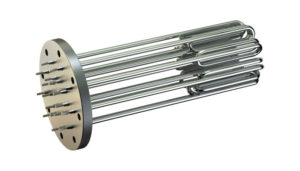How to Use Immersion Heaters for Chemical Processing
Last updated on January 9th, 2024 at 10:03 pm
Immersion heaters are available in a wide variety to compliment the need of chemical processes used in the industry. Companies will have to determine what type they should select because this will determine their principles and strategies to implement. Since immersion heaters are used for different industrial applications, companies should have to be familiar with what they are going to buy.
As the name suggests, immersion heaters are normally immersed in solvents, molten materials, gases, oils, water and process solutions, where they heat the liquid by releasing their energy, thus making them highly energy efficient. These heaters are available in different sizes, terminations, accessories, kilowatt ratings, voltages and sheath materials and therefore, allow companies to customize them as they want.
A basic immersion heater comprises of the flange, booster, in-line or circulation, screw plug, bayonet or pipe insert with an over-the-sides design. They are normally manufactured with a tubular design design where, they are capable of operating at higher watt densities. As immersion heaters are designed for numerous industrial purposes, they are normally categorized into two groups: closed (pressurized) systems and open tank (non-pressurized) systems.
Pressurized systems
 The flanged immersion heaters operate with water storage tanks and water boilers to heat the fluid. They consist of tubular heater welded or brazed with a 4 or 6-bolt flange with threaded stud terminals or screw lug to establish a wiring connection.
The flanged immersion heaters operate with water storage tanks and water boilers to heat the fluid. They consist of tubular heater welded or brazed with a 4 or 6-bolt flange with threaded stud terminals or screw lug to establish a wiring connection.
These immersion heaters are directly connected with a mating companion flange, which is welded on a nozzle or tank wall. Its assembly is quite easy thus allowing companies to easily unbolt the flange in order to replace the heater. The screw plug immersion heaters are used for caustic cleaners, liquid high-purity water, processed water, clean-water rinse tanks, chemical baths, liquid paraffin and glycol solutions. In short, they are used for applications that need precise temperature control for the fluids.
The responsive heat exchangers offer higher power and faster thermal reaction in smaller footprints when compared to other conventional heaters. They are particularly useful when it comes to low wattage consumption and single phasing.
Non-pressurized systems
Over-the-side immersion heaters are designed with O and L shapes which are installed at the top of the tank with heated elements immersed at the bottom or along the side. These heaters offer even heat distribution and can be easily removed for ease in cleaning of tanks and heaters.
They have a range of option sheath materials, terminal enclosures, mounting methods and kilowatt ratings to enable users easily customize them. The immersion heaters are designed for heating salts, solvents, water, acids and oils and are normally used for freeze protection. There are 2 other kinds of over-the-side heaters that have tubular heater design hung over the side of the drum heater and open tank that can easily compliment the 55-gallon drum bung hole and is used to melt heat sensitive materials like various oils, lard, paraffin (wax), grease and many other viscous liquids.
